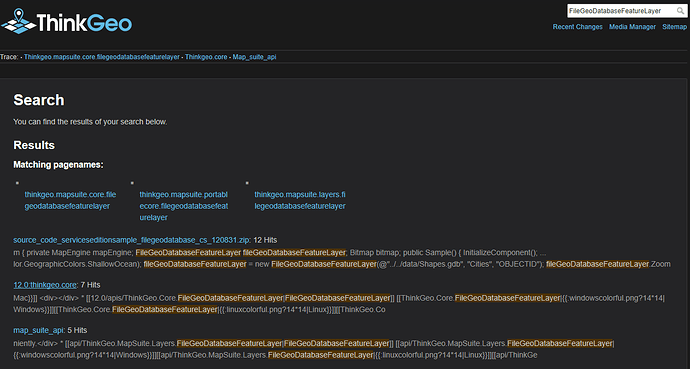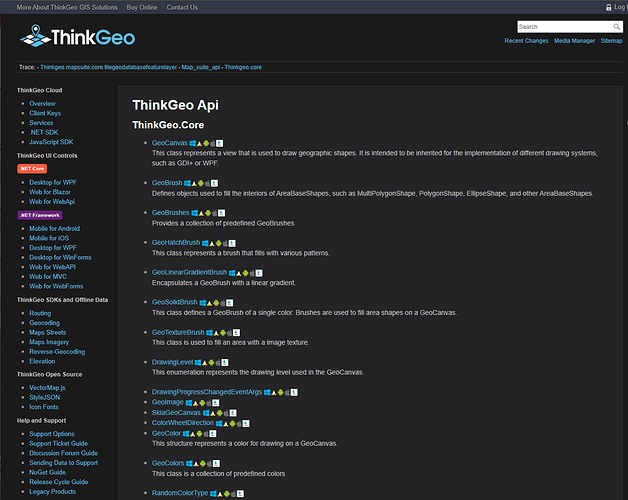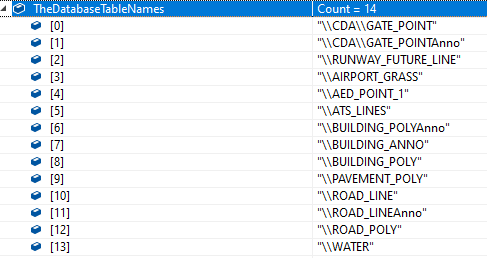ThinkGeo Team,
I’ve begin the process to upgrade from MapSuite V10.5 to ThinkGeo Core V12.1.
I would appreciate assistance on how to implement FileGeoDatabaseFeatureLayer as it has changed from MapSuite. I attempted to use your API Documentation Guide. Searching for FileGeoDatabaseFeatureLayer returns 7 Hits, but pressing the link returns unrelated information.
Below are screen-captures of the search results and result of pressing the link.
It appears that the fundamental methodology of integrating FileGeoDatabaseFeatureLayer has changed.
The GetTableNames API no longer exists.
The constructor for FileGeoDatabaseFeatureLayer has changed.
The basic code for V10.5 is:
TheDatabaseTableNames = FileGeoDatabaseFeatureLayer.GetTableNames(TheFilePath);
foreach (string TheTableName in TheDatabaseTableNames)
{
TheFileGeoDatabaseFeatureLayer = new FileGeoDatabaseFeatureLayer(TheFilePath, TheTableName, "OBJECTID");
at this point styles are applied and layer loaded into map
}
In order for the above code to work it uses GetTableNames, which no longer exists. In order to load each layer within the GDB how are the table names determined?
Since the constructor has changed is the following the proper code for Core V12.1?
TheFileGeoDatabaseFeatureLayer = new FileGeoDatabaseFeatureLayer(TheFilePath);
TheFileGeoDatabaseFeatureLayer.Name = TheTableName;
THeFileGeoDatabaseFeatureLayer.FeatureIdFieldName = "OBJECTID";
The Start Building with ThinkGeo guide lists a few changes between MapSuite and Core, but is there a comprehensive document that details all changes with examples of how to convert to V12?
I downloaded HowDoISamples-ForWPF.NETCore-master.zip and have found som3 good examples.
Regards,
Dennis




